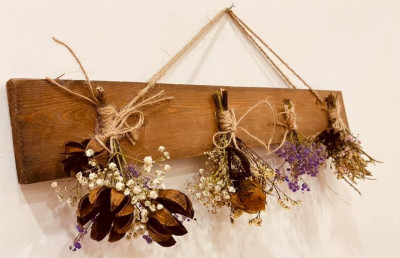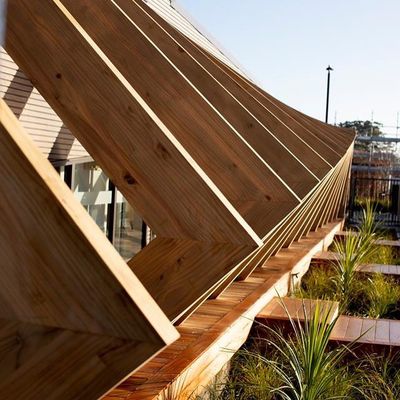Is it time to take a step back and assess your early years’ environment?
- Do you have a cohesive and well-functioning team with equal responsibilities or does the responsibility to keep your environments maintained fall on one person?
- When walking into your space, do you feel a sense of calm and order, or anxiety and chaos?
- Is your environment an inspiring place for educators and children to work together and learn, or does it look more like a storage facility?
- Are your cupboards labelled and organised so others know where to return resources, or are they bursting open in the never-ending struggle to hold shut?
- Do you know where to find essential resources (pens, paper, the brush and shovel, etc.) without holding a search party?
Here are some quick and easy ways to breathe life into your space without breaking the bank.
1. Define what is important to your team and continually revisit this.
Take the time to collectively plan and document your room philosophy, identifying your shared vision for the environment. Collaborating with your team will keep you inspired, on the same page, and equally accountable for maintaining this vision. When planning, try the following:
- Consider and discuss what beauty means to you as a team. Is it fresh flowers, a burning candle, organised environments, and/or contextual objects that resonate with your values?
- Build a collection of inspirational imagery that reflects your team. Using your Enspirement lookbooks, you can invite friends and colleagues to collaborate and share ideas with your team. When you gather ideas collectively, you will align your thoughts and values.
- Determine your goals and stay focused. Revisit this plan regularly and remain true to your team values. This alignment will quickly become evident to others, including parents, families, and of course, your most significant group of tiny advocates – your children.
- Share your team's planning with your children’s families to get them on board and inspire them to be a part of this journey.
- Create a shared wishlist. This is not an open invitation to an endless list of resources and equipment. Instead, use this wishlist to align your pedagogy with your environments to encourage purchases with intent and meaning.
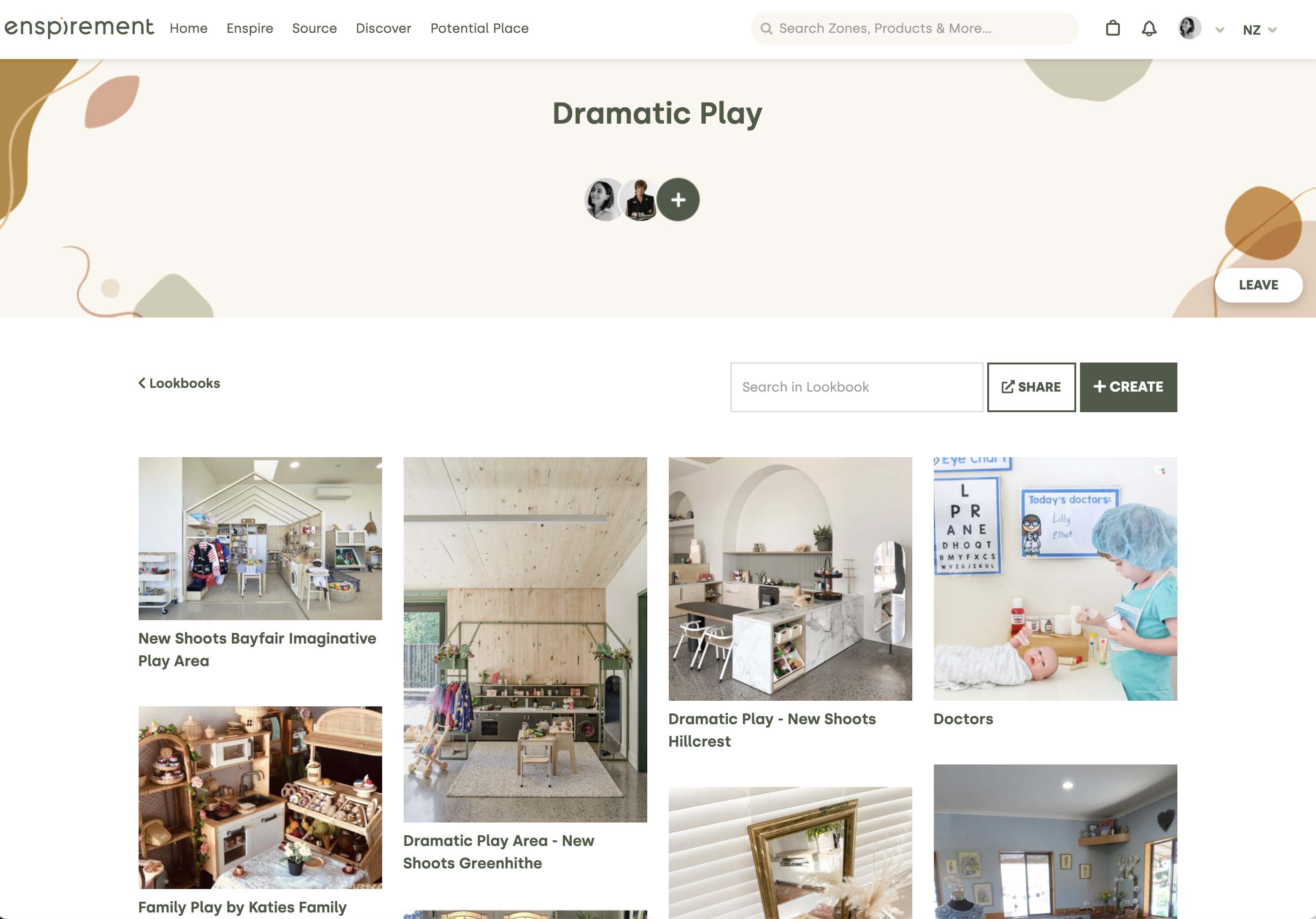
Collaborative Enspirement Lookbook - this is a great way to share and collaborate on a vision for your environments.
2. Clear the clutter
Early childhood educators are natural-born collectors and creators, turning very little into an engaging experience for children. As early childhood educators, we’ve spent a significant amount of time and money attending professional development in continued education. As we learn more, we create, collect, and store items we are inspired by. Because of the time, energy, and effort spent developing and finding these rich resources, we find it difficult to understand what has become rubbish, and parting with these treasures becomes problematic. The step we often miss is the system to store and order these treasures. Correct storage encourages them to be brought out and used when appropriate.
“Clutter of any type contributes to the feeling of general chaos and stress. However, when everything is disorganised and in disarray, finding things and tidying things up becomes daunting.” Anthony Semann from Semann & Slattery.
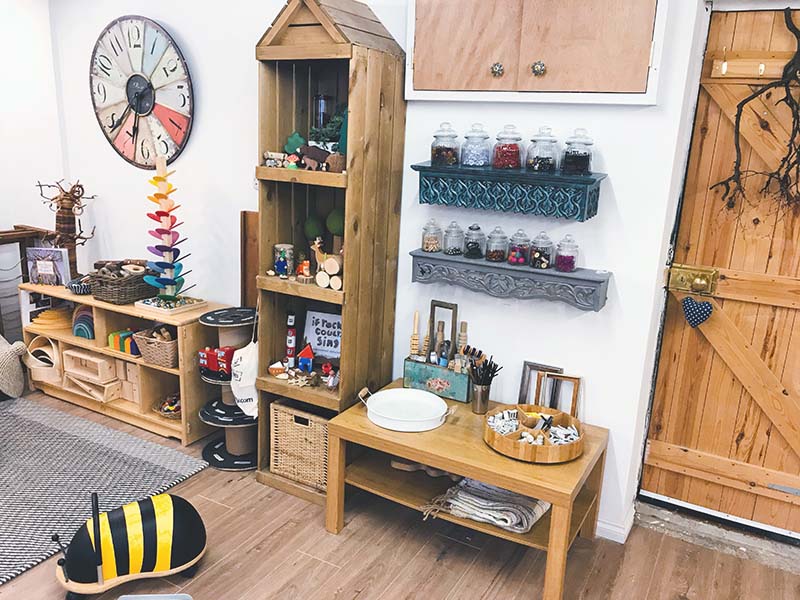
Image of Roseville Childcare, United Kingdom, modelling multiple organisation techniques that are aesthetically pleasing and display a clear home to use and return resources to.
Top decluttering tips:
- Clear your flat surfaces. Ensure the items you choose to put back and display have meaning and visual interest. Talking with older children about these displays involves them in the process of selecting and re-organising the resources.
- Display resources in a way that enhances the classroom's beauty. Organise and lay out the environment ensuring everything has a purpose. For example, natural baskets, tins, and non-plastic containers are sorted and tidied daily and arranged on shelves within the children's reach.
- Reduce the number of toys and resources on display. Sort your resources so they can be easily found and rotated to connect to children's current interests.
- Storage systems are your friend. Create labelled storage solutions, i.e., shoe boxes, cloth drawstring bags, sealed bags, pizza boxes, cardboard boxes, document storage boxes, recycled jars all consistent in size so they stack. Using clear storage solutions makes it easy to assess what’s inside without too much effort.
It’s important for this process of decluttering to be carried out consistently and for the whole team to be held accountable for its maintenance. Conflict does happen, even in the healthiest of teams, so encouraging open discussions that continually align values, and guiding team members to a resolution will continue the forward momentum.
It takes time and perseverance to maintain an ordered environment and a team committed to supporting each other in this. It’s said it takes 21 days to change behaviours such as consistent organising, resetting and caring for the environment.
Order brings good things. Interestingly, followers of the Chinese discipline feng shui believe well-ordered environments align energy and bring good fortune in other areas of your life. Therefore, everyone will enjoy the soothing surroundings and pleasing aesthetics of the balanced style of feng shui.
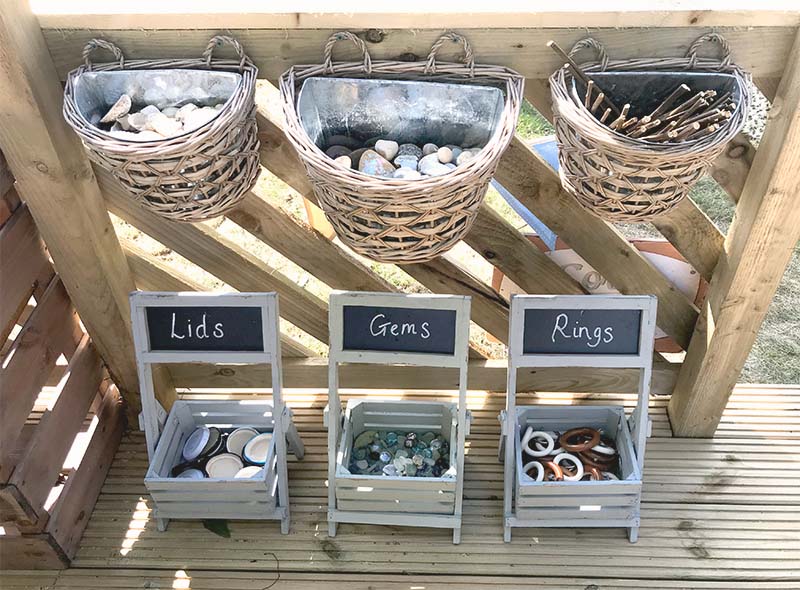
Order and sort are not just mathematical concepts to be taught to children. It is a fundamental component of environmental design. Image of Roseville Childcare, United Kingdom, by Emma Smith.
3. De-commercialise your space and add personal touches
Personal touches turn a room into a place with emotional ties that have a feeling of home. Simple ways to personalise your spaces include:
- De-commercialise your walls. Intentionally and carefully select what is displayed. Display children’s artwork meaningfully. Consider what is put on the walls and ensure their voice is reflected in these creations.
- Add soft furnishings using colour and texture to create depth and interest. For example, upholstered furniture, such as a comfortable chair or couch, throw cushions and blankets, rugs, etc.
- Add non-toxic indoor plants; the more, the merrier. Plants are an economical way of tying in the natural environment, offering many benefits to an interior space.
- Consider your lighting. Where possible, turn off your artificial lighting and create ambient task lighting. For example, clear all windows from displays so natural light is not obscured, swap fluorescent bulbs with LED bulbs, add lighting at different levels, e.g., table lamps, etc.
- Fresh flowers and greenery in vases create ambience and touch the soul. This doesn’t need to be a large expensive display. Flowers can be foraged carefully at little to no cost.
- Declutter and calm your colour palette. Research tells us that natural colour palettes contextual to our surroundings provide a sense of belonging and calm, contributing to a more relaxed environment that will sustain children's focus.
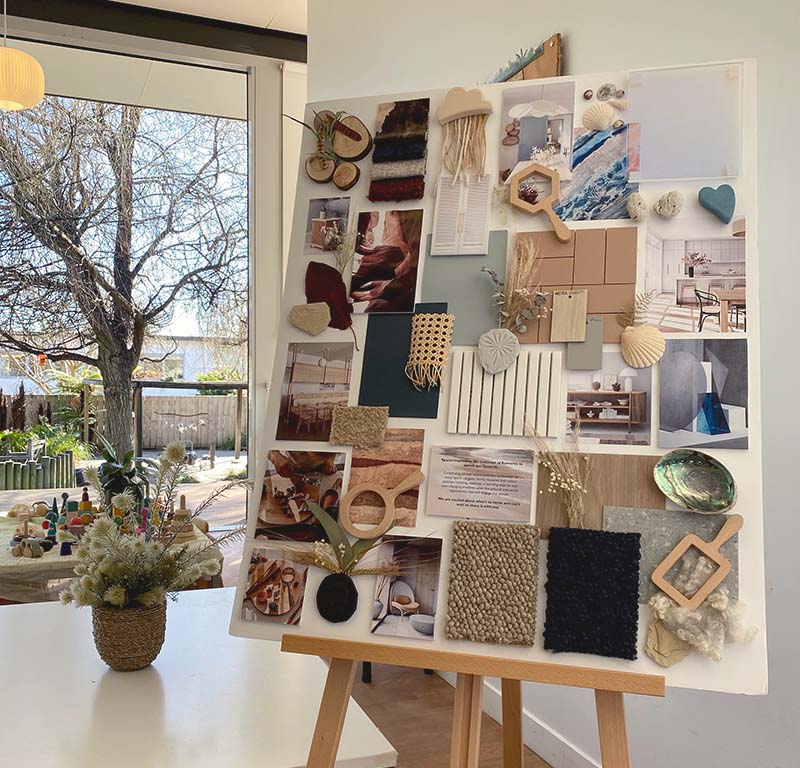
New Shoots Children’s Centre, Papamoa colour palette and renovation mood board.
4. Hit the opportunity and thrift shops
Opportunity shops are a treasure trove for objects that children are drawn to; recycled mobile phones, sparkly sequined bags, shoes with gems, and diamonds destined for landfills. Pots and pans, jelly moulds, and muffin tins for use in the sandpit or as musical instruments. This is an opportunity to support children in their imagination to re-create and re-enact real-life experiences supported with real-life recycled resources. Stunningly beautiful, eclectic, diverse, and exciting.
Focal points are essential for organising visual cues and giving a sense of purpose to objects in the space. These objects create a sense of wonder and awe for other educators, children, and families. In addition, they pique an interest in form, colour, texture, and space that cannot be replicated in catalogue purchases. Take note of any second-hand stores near your centre or home and pop in every now and then.
Michelle Pratt, co-founder of Enspirement and New Shoots Children’s Centre tips and tricks for op-shopping.
5. Recycle and reuse
The way we recycle and repurpose resources is fundamental in providing children with opportunities to problem-solve in creative ways that develop a genuine respect for the environment. While catalogue items add variety and clear learning outcomes, they are not the starting point.
Allow children the opportunity to use “real” items, e.g., glasses, plates, utensils, tea sets, etc. Teaching children the value of ceramics and breakables is a great way to support them to care for precious objects as they grow into adults. In addition, children need to understand the consequences linked to their associated actions.
Natural resources surround us in our everyday life. They can be shells on the beach, leaves, bark, sticks, pinecones, seeds, and stones from the park. Infuse natural items throughout your early years’ environment. If your local surroundings are a beach, forest, or a reserve full of leaves and flowers, take a walk, collect items that support and encourage exploration, and help children to connect with the natural world. Nature provides an excellent and cost-effective inspiration source that stimulates design, creativity, discovery, and learning.
Look to your community for recycled resources, such as tubes and guttering from the parent that is a plumber or a cable reel from the electrician. They could be milk crates from your local café. These objects connect the local community and give children the opportunity to use open-ended resources with no defined outcome. There is no right or wrong and no fixed meaning or purpose; beauty is in what can be created with an open imagination.
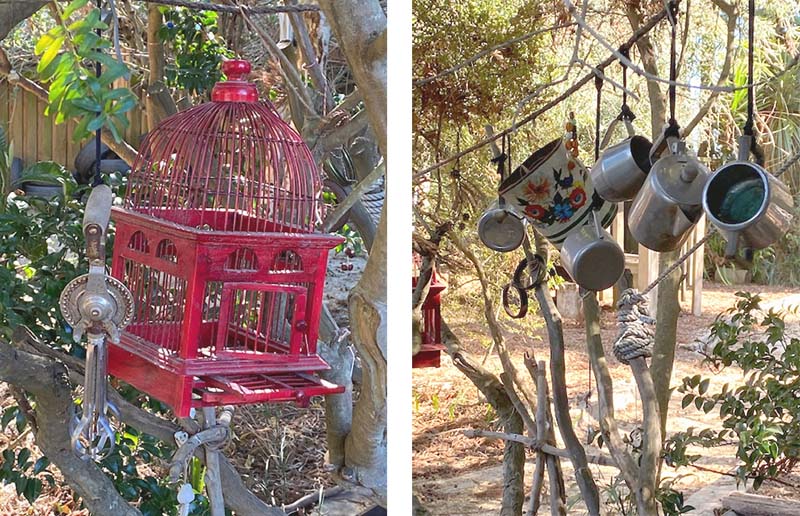
Up-cycled and repurposed collections of surprise and delight at The Nest private kindergarten in New Zealand.
At Enspirement, we believe all educators and children deserve beautiful environments - and beauty doesn’t have to cost the earth. It may just involve a refresh of your environment to ensure it has more order, calm, and meaning.
Enspirement will support you with visual cues to create environments where pedagogy is embedded seamlessly. Dive deep into magical early years’ places full of awe and wonder and see where it takes you.
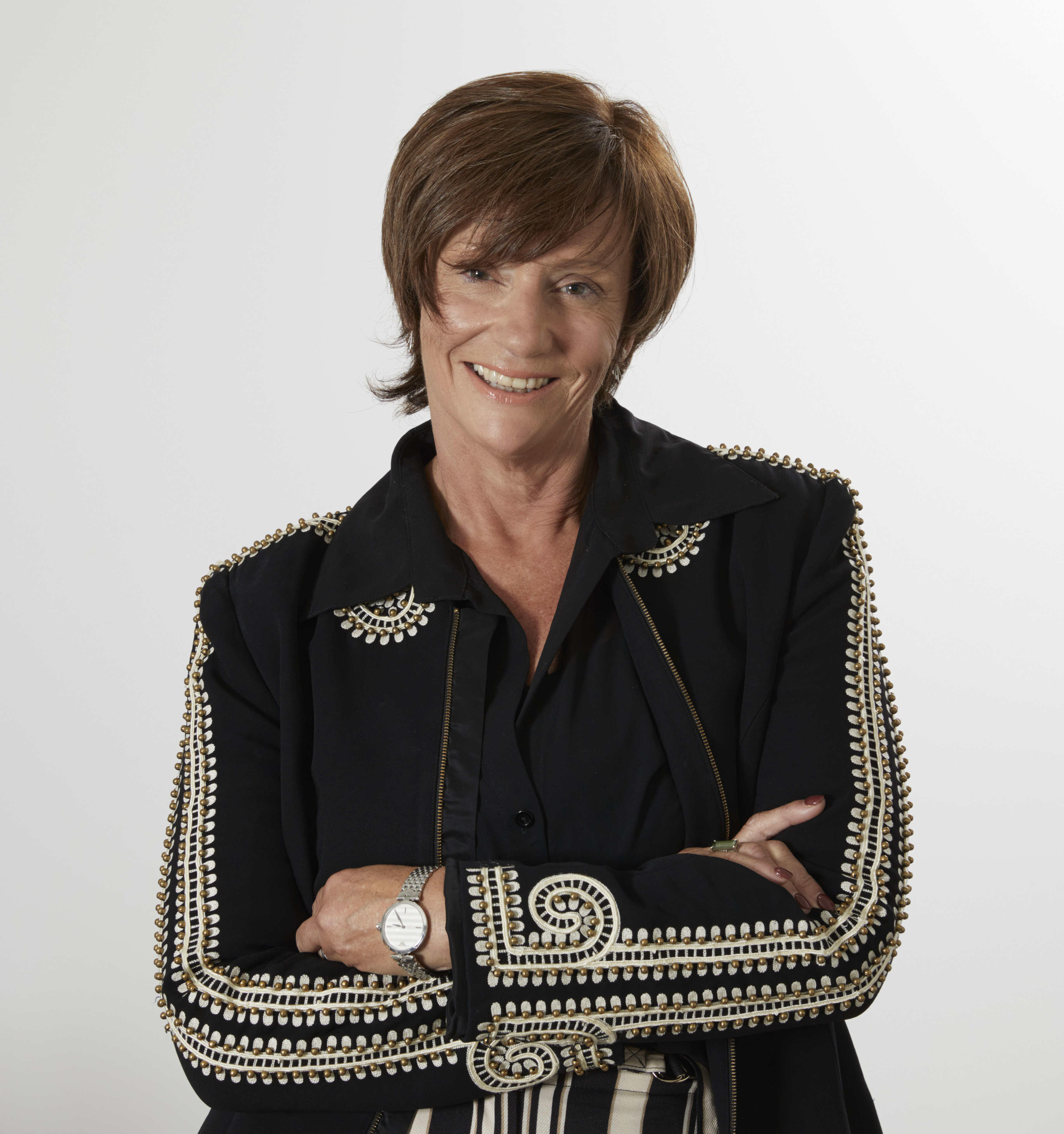 Michelle Pratt
Michelle Pratt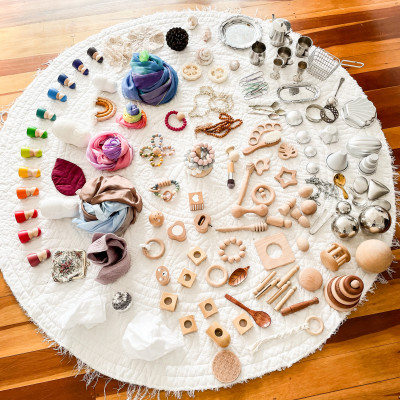
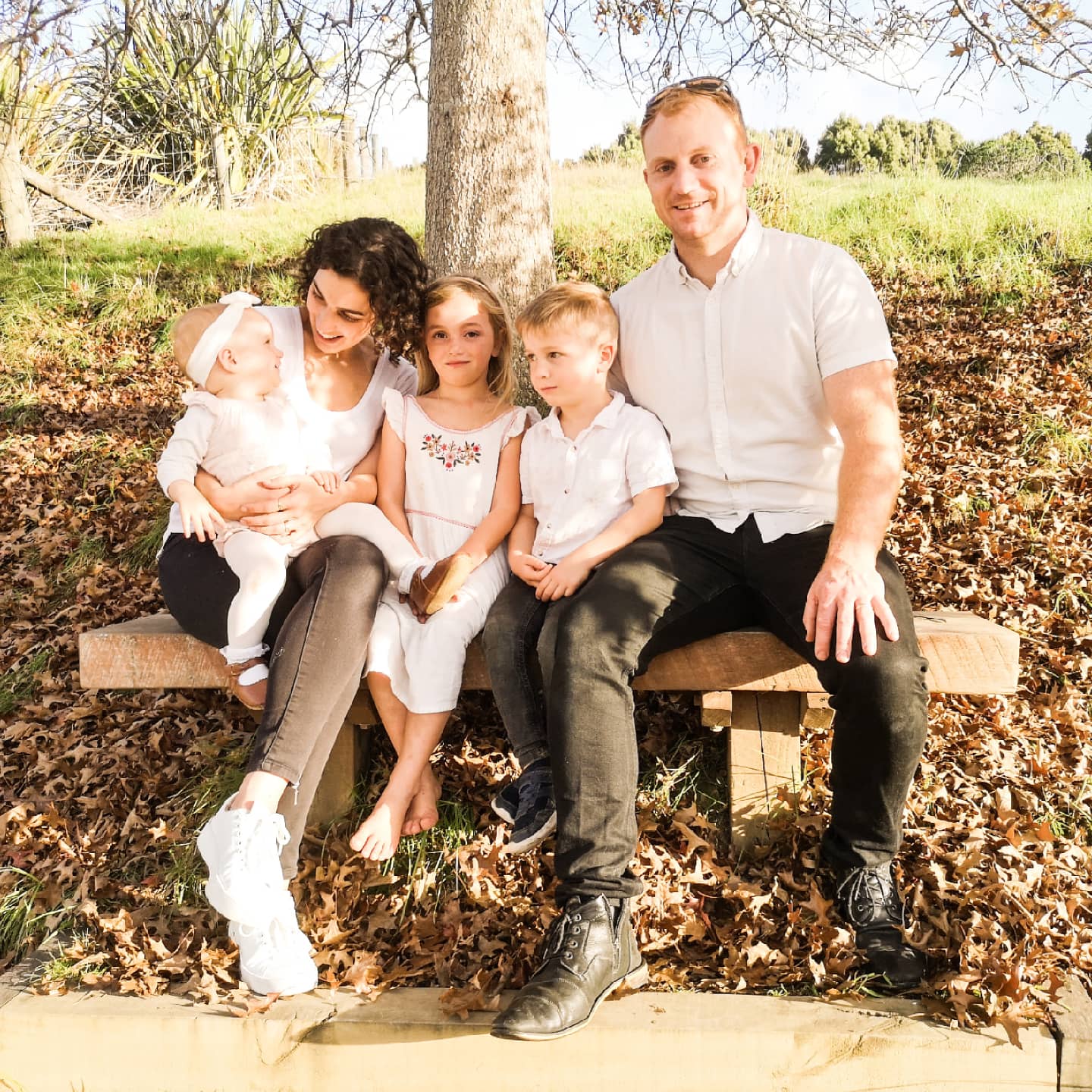 Lucie Kinzett
Lucie Kinzett